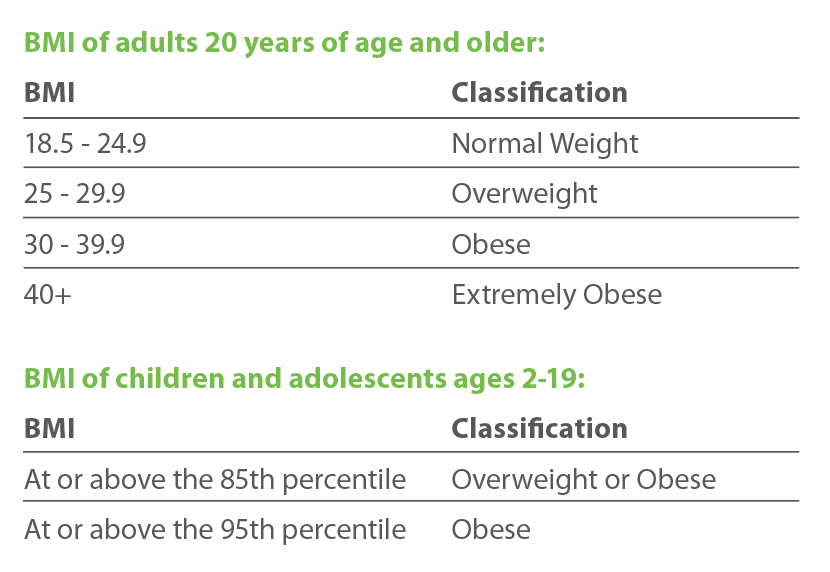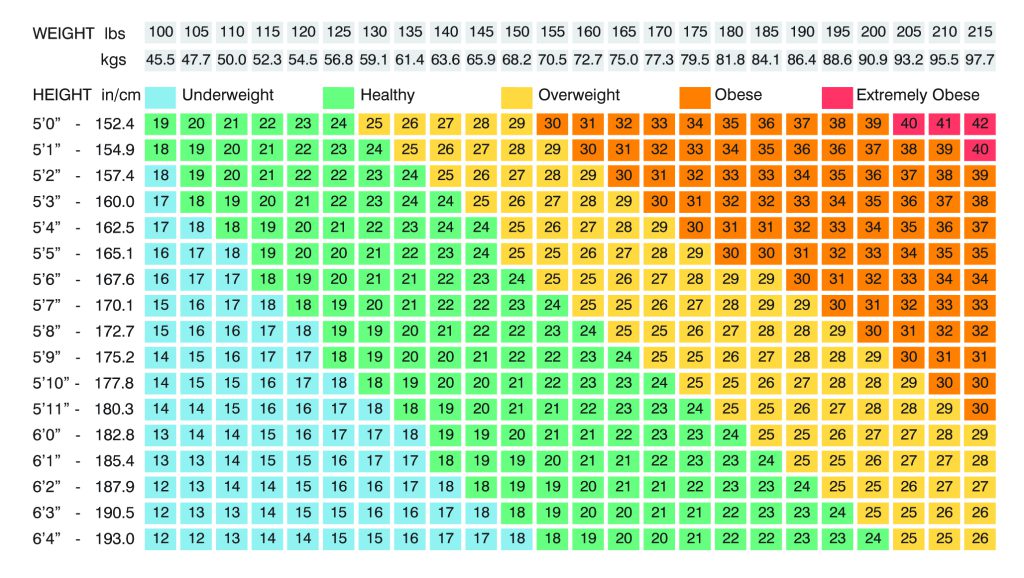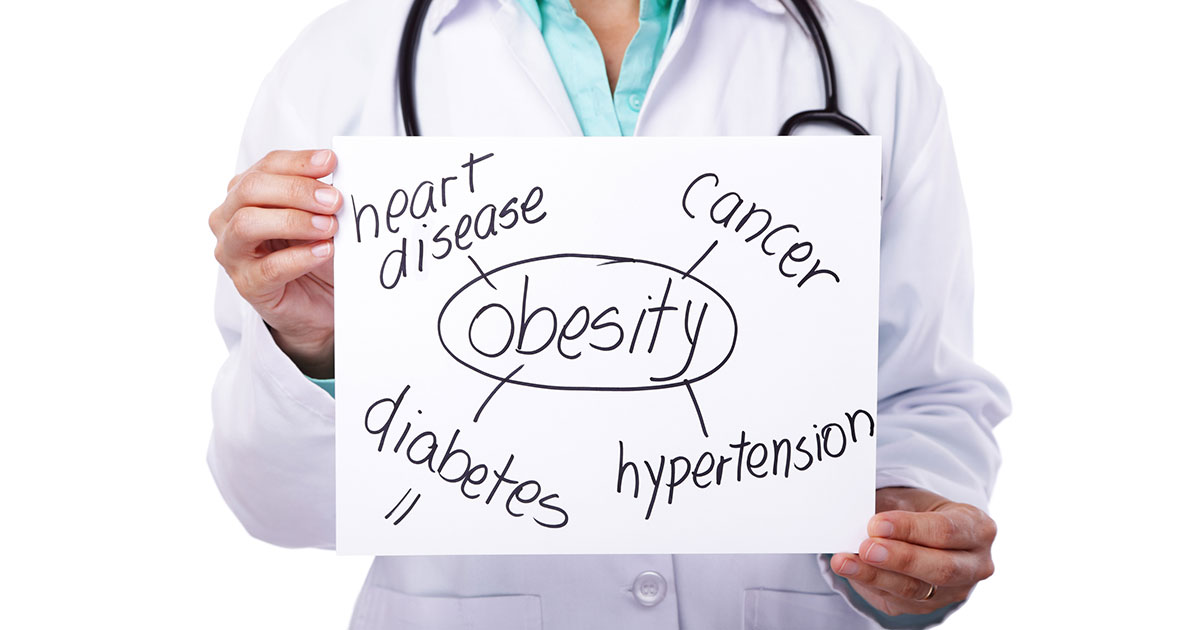National obesity statistics in the U.S. are staggering. Nearly 1 in 3 adults (30.7%) are overweight, while 42.4% have obesity.¹ It is estimated that 9.2% of adults, and 6.1% of adolescents (ages 2-19) have severe obesity.¹
What is the difference between overweight and obesity?⁴
Overweight is extra body weight, consisting of muscle, bone, fat, and water. Obesity is excess body fat.
How do I know whether I am overweight or obese?¹
Calculation of a person’s Body Mass Index (BMI) provides information that determines which weight class he/she falls into. BMI is calculated using a person’s height and weight, which then helps to determine which weight class he/she is in.

How do I measure BMI?
See the BMI chart below.

What factors contribute to a healthy weight?⁴
Many factors can contribute to a person’s weight. These factors include environment, family history and genetics, metabolism (the way your body changes food and oxygen into energy), and behavior or habits.
What are the risk factors of being overweight and obesity?¹
- Type 2 diabetes
- High blood pressure
- Heart disease
- Stroke
- Joint problems
- Non-alcoholic fatty liver disease
- Some cancers (kidney, colon, breast, and endometrial)
- Gallstones
- Sleep and breathing problems, among other conditions
Strategies to prevent being overweight or obese and related diseases.2
- Find at least three 30-minute time slots you could use for physical activity.
- Schedule physical activity for times in the day or week when you feel energetic.
- Join a group, such as a class at the local gym or a hiking club, to motivate you.
- Add physical activity to your workday by walking during your lunch break and taking the stairs when possible.
- Ask a health professional what physical activities are right for your age, fitness level, skill level, and health.
- Consider community or online resources that offer physical activity programs specifically for older adults.
- When possible, stay in places with swimming pools or fitness centers and use those facilities.
- Trade babysitting time with a friend, neighbor, or family member who also has small children. When it’s their turn to watch the children, it’s your turn to be physically active.
Physical activity is anything that gets your body moving. Each week adults need 150 minutes of moderate-intensity physical activity and 2 days of muscle strengthening activity, according to the current Physical Activity Guidelines for Americans.2
Importance of maintaining a healthy weight.
Losing weight isn’t easy, but there’s no doubt it’s worth it. It sounds simple enough: To lose weight, you need to burn more calories than you eat. And to stay at a healthy weight, you need to balance healthy eating and physical activity. Most fad diets and quick weight loss schemes don’t work, because they don’t help you learn how to maintain a healthy weight over the long haul.⁵
- Even a modest weight loss of 5% to 10% of your total body weight is likely to produce health benefits, such as improvements in blood pressure, blood cholesterol, and blood sugars.⁶
- Weight loss of 1-2 pounds/week will help you to maintain the weight that you lose, while adjusting to healthy lifestyle changes.⁶
- It is best to maintain modest weight loss over time rather than lose a lot of weight quickly, because you’re more likely to keep the weight off. After you have maintained a specific weight loss for 6 months, you can begin to think about losing additional weight if necessary.
Keep in mind that you want to develop lifestyle habits that will help you maintain your weight versus a diet that you go on and then go off. If you are considering a weight loss program or have questions about losing weight, consult your healthcare professional for guidance.
©2022HealthSpot References: (1) National Institute of Diabetes and Digestive, and Kidney Diseases. (2022). Overweight and obesity statistics. Retrieved from https://www.niddk.nih.gov/health-information/health-statistics/Pages/overweight-obesity-statistics.aspx#b (2) Centers for Disease Control and Prevention. (2021). Adult overweight and obesity. Overweight and Obesity. Retrieved from https://www.cdc.gov/obesity/index.html (3) United States Department of Agriculture. (2022). ChooseMyPlate. Retrieved from https://www.choosemyplate.gov (4) National Heart, Lung, and Blood Institute. (n.d.). Aim for a healthy weight – Facts about healthy weight. Retrieved from https://www.nhlbi.nih.gov/health/educational/lose_wt/index.htm (5) Retrieved from American Heart Association https://www.heart.org/en/healthy-living/healthy-eating/losing-weight/keeping-a-healthy-body-weight (6) Retrieved from the CDC https://www.cdc.gov/healthyweight/losing_weight/index.html

